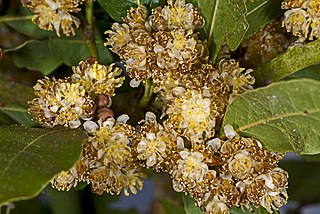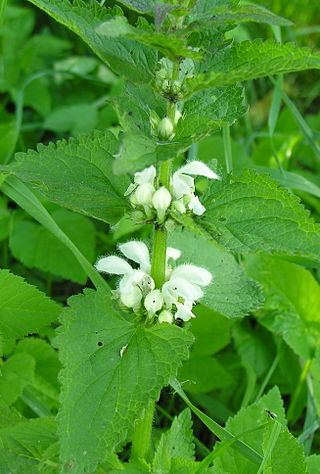
Asparagales is an order of plants in modern classification systems such as the Angiosperm Phylogeny Group (APG) and the Angiosperm Phylogeny Web. The order takes its name from the type family Asparagaceae and is placed in the monocots amongst the lilioid monocots. The order has only recently been recognized in classification systems. It was first put forward by Huber in 1977 and later taken up in the Dahlgren system of 1985 and then the APG in 1998, 2003 and 2009. Before this, many of its families were assigned to the old order Liliales, a very large order containing almost all monocots with colorful tepals and lacking starch in their endosperm. DNA sequence analysis indicated that many of the taxa previously included in Liliales should actually be redistributed over three orders, Liliales, Asparagales, and Dioscoreales. The boundaries of the Asparagales and of its families have undergone a series of changes in recent years; future research may lead to further changes and ultimately greater stability. In the APG circumscription, Asparagales is the largest order of monocots with 14 families, 1,122 genera, and about 36,000 species.

The Alismatales (alismatids) are an order of flowering plants including about 4,500 species. Plants assigned to this order are mostly tropical or aquatic. Some grow in fresh water, some in marine habitats. Perhaps the most important food crop in the order is the taro plant, Colocasia esculenta.

The Dioscoreales are an order of monocotyledonous flowering plants, organized under modern classification systems, such as the Angiosperm Phylogeny Group or the Angiosperm Phylogeny Web. Among monocot plants, Dioscoreales are grouped with the lilioid monocots, wherein they are a sister group to the Pandanales. In total, the order Dioscoreales comprises three families, 22 genera and about 850 species.

The Laurales are an order of flowering plants. They are magnoliids, related to the Magnoliales.

The Magnoliales are an order of flowering plants.

The dicotyledons, also known as dicots, are one of the two groups into which all the flowering plants (angiosperms) were formerly divided. The name refers to one of the typical characteristics of the group: namely, that the seed has two embryonic leaves or cotyledons. There are around 200,000 species within this group. The other group of flowering plants were called monocotyledons, typically each having one cotyledon. Historically, these two groups formed the two divisions of the flowering plants.

Monocotyledons, commonly referred to as monocots, are grass and grass-like flowering plants (angiosperms), the seeds of which typically contain only one embryonic leaf, or cotyledon. They constitute one of the major groups into which the flowering plants have traditionally been divided; the rest of the flowering plants have two cotyledons and are classified as dicotyledons, or dicots.
The Cronquist system is a taxonomic classification system of flowering plants. It was developed by Arthur Cronquist in a series of monographs and texts, including The Evolution and Classification of Flowering Plants and An Integrated System of Classification of Flowering Plants (1981).

Juncaginaceae is a family of flowering plants, recognized by most taxonomists for the past few decades. It is also known as the arrowgrass family. It includes 3 genera with a total of 34 known species.
Plant taxonomy is the science that finds, identifies, describes, classifies, and names plants. It is one of the main branches of taxonomy.

A system of plant taxonomy, the Eichler system was the first phylogenetic (phyletic) or evolutionary system. It was developed by August W. Eichler (1839–1887), initially in his Blüthendiagramme (1875–1878) and then in successive editions of his Syllabus (1876–1890). After his death his colleague Adolf Engler (1844–1930) continued its development, and it became widely accepted.
A system of plant taxonomy by John Hutchinson, the Hutchinson system, was published as The families of flowering plants, arranged according to a new system based on their probable phylogeny in three editions; 1st edition 1926–1934; 2nd edition 1959; 3rd edition, 1973. This classification is according to the 1st Edition Volume 1: Dicotyledonae 1926 and Volume 2:Monocotyledonae 1934.
A system of plant taxonomy, the Bessey system was published by Charles Bessey in 1915.

Lilianae is a botanical name for a superorder of flowering plants. Such a superorder of necessity includes the type family Liliaceae. Terminations at the rank of superorder are not standardized by the International Code of Nomenclature for algae, fungi, and plants (ICN), although the suffix -anae has been proposed.
The Strobiloideae are an obsolete taxonomic name, a subclass of both Monocotyledons and Dicotyledons proposed by Charles Bessey in 1915 in his taxonomic classification of plants. In this sense by not being unique it breaks the rules of botanical nomenclature as currently used, however Bessey actually used a qualifying hyphenation, a distinction not always recognised in reference to this scheme.
Aaron Goldberg was an American botanist and parasitologist. He died in December 2014 at the Holy Cross Hospital in Silver Spring, Maryland, at the age of 97.
Herbert Franz Josef Huber was a German botanist. At the time of his death in 2005 he was professor emeritus at the University of Kaiserslautern, Germany. He is known for his contributions to the classification of angiosperms.

BurmannialesMart. was an order of monocotyledons, subsequently discontinued.

Coronariae is a term used historically to refer to a group of flowering plants, generally including the lilies (Liliaceae), and later replaced by the order Liliales. First used in the 17th century by John Ray, it referred to flowers used to insert in garlands. Coronariae soon came to be associated with Liliaceae in the Linnaean system. The term was abandoned at the end of the 19th century, being replaced with Liliiflorae and then Liliales.











